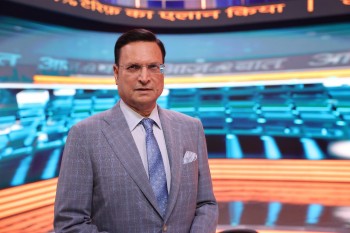
Madhya Pradesh government has imposed a ban on sale, purchase and storage of PVC ‘carbide’ pipe gun firecrackers after at least 300 people suffered eye injuries and ten persons lost their eyesight during Diwali celebrations.
In my 9 pm prime time show ‘Aaj Ki Baat’ telecast on India TV on Thursday night, we showed how PVC carbide pipe guns were being sold openly in shops across Bhopal. Late in the night, the district collector issued a prohibitory order banning sale of these PVC guns.
These ‘carbide guns’, made of PVC pipes are commonly sold as children’s toys during Diwali festive season, but they have been found to be extremely unsafe due to explosive chemical reactions.
The prohibitory order will be enforced by sub-divisional magistrates, executive magistrates and police officers, for all pipe guns made of PVC, iron or steel.
India TV correspondent Anurag Amitabh found these pipe guns being sold during Diwali rush for Rs 150 to 200 per piece in places like Bhopal, Seoni, Indore, Gwalior, Jabalpur and Vidisha.
To make a pipe gun, two PVC pipes are joined and filled with potash or calcium carbide. Some water drops are dropped on this chemical and the ignition is carried out by using a lighter. The explosion is deafening and sparks fly out that can damage the eyes.
Originally, these PVC carbide guns were used by farmers to shoo off stray cattle from fields, but after reels started trending on social media, shopkeepers decided to make a clean profit by selling them as Diwali toys. Thousands of people watched ‘pipe gun’ making reels on social media
What happened in Madhya Pradesh was because of reels that became viral on social media. People were shown how to make PVC pipe guns. Some of them tried making these pipe guns and lost their eyesight.
In today’s age people spend most of their time on Facebook, WhatsApp and YouTube. They trust videos and reels that are posted. They believe these to be gospel truth, but the damage that was done can seen in Bhopal, Gwalior and Vidisha.
I would request all of you to be careful and refrain from trusting such reels on social media blindly. Everybody must apply his or her mind to decide what is safe and what is unsafe.
Rush for Chhath : How Railway is coping with crowds
With the annual Chhath festival approaching early next week, all trains going to Bihar and eastern Uttar Pradesh are full. Outside some stations in Gujarat, nearly 2 km long queues of travellers were seen.
Indian Railways have made arrangements to run 13,000 special trains, but these are unable to cope with the rush.
On Thursday, Railway Minister Ashwini Vaishnaw sat inside the three war rooms at Rail Bhavan to keep a watch on crowd management and train locations. These three war rooms monitor movement of crowds in 35 top stations round-the-clock. Minute-to-minute data are being prepared and a heat map is developed. Every hour, footfalls at these 36 stations are noted.
Special trains are immediately sent to stations where huge crowds are noticed. In one case, when the minister noticed a huge rush at Ambala station in Haryana for a train going from Amritsar to Purnea, another train was dispatched from Jalandhar to accommodate extra passengers.
Crowds were also noticed in Surat and Udhna stations of Gujarat. More than 2 km long queues of travellers were noticed and the platforms were full. Additional trains were rushed to these stations.
Indian Railways have developed a new mechanism for crowd management. 35 railway stations in India have been identified which cope with huge rush during festivals. These stations are monitored round-the-clock using cctv cameras. Immediate feedback is taken from local railway officials and special trains are sent.
Railway Minister Ashwini Vaishnaw said, more than five million people travelled during Diwali and Chhath this year compared to last year. He promised to improve the system next year.
Lakhs of people travel to Bihar and eastern UP to celebrate Chhath festival every year. Many travellers even sit on train rooftops or hang near the train door to travel to their homes.
The only difference this time is, Indian Railways is trying its best to take care of travellers. This has been possible due to the personal involvement of the Railway Minister. Ashwini Vaishnaw studied data and prepared a plan to run special trains. He provided facilities for travellers at railway stations.
The problem began when travellers came to know that several thousand special trains are being run. The crowds multiplied several times.
Earlier, people used to avoid going to their homes to celebrate Chhath because of the train rush, but this time, they packed their bags with their family and made a beeline to the stations. This is the reason why the arrangements fell short.
At least travellers have the satisfaction that they travelled by trains and Railways took care of them. This trust is a valuable thing. One more point: Do not blindly believe claims that are being made on social media about shortage of trains. Trust the information that is given officially by Indian Railways.
Get connected on Twitter, Instagram & Facebook